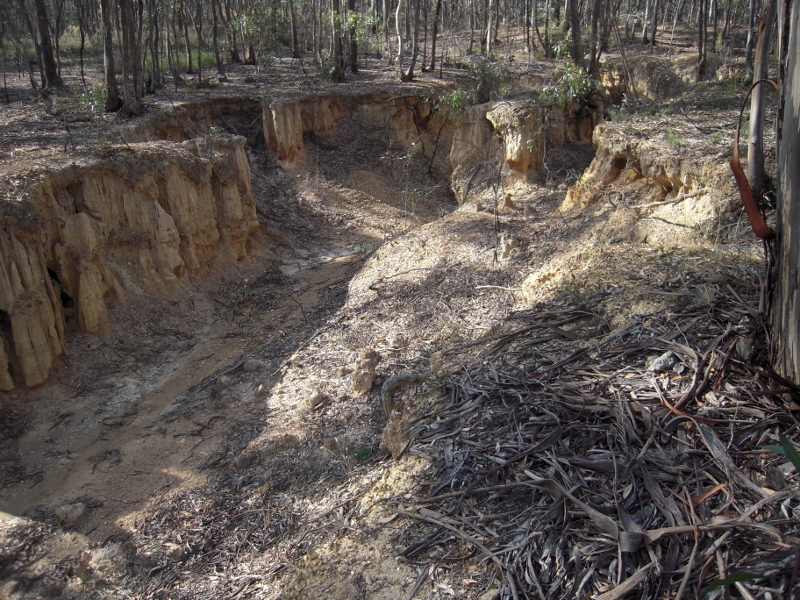Every time there’s a flood, there seems to be an outbreak of simple suggestions about how the disaster might have been averted. Some of these are more sensible than others, and even some of the more sensible ones–like, stay out of the flood plain, and you won’t be flooded–aren’t very helpful for people who, through no fault of their own, find themselves in flood prone areas.
There may also be a case for schemes to hold as much flash flood water as possible in areas of the catchment from where it can flow more slowly over a longer time into creeks and streams. Those who have been paying attention to the various reports arising from the Queensland floods will have noticed that the flash floods in Toowoomba might have been prevented had the local council spent money on holding basins in critical parts of the catchment. Old timers in Castlemaine tell us that such work was planned in the Poverty Gully area in the 1990s, but not proceeded with. A large part of the flash flood in Castlemaine came from a huge dump of water from the Poverty Gully catchment. Work like this costs money—but so does flood damage. Our environment is a degraded one, with very thin soil cover, where heavy rain runs off very quickly instead of being retained in the soil or held back by vegetation.
Readers might be interested in the reflections of ecologist Ian Lunt on the effects of water on degraded land:
‘Intact ecosystems are very good at retaining water. Falling rain hits ground plants and litter, and these slow the flow of water through the ecosystem. The more water that is held in the landscape, and the longer it is available, the greater the biological productivity.

Degraded landscape in the Campbells Creek catchment: Ian Lundt says that improving the capacity of landscapes to hold water could soften flood impacts.
‘By contrast, degraded dryland systems are very leaky. Degrading processes such as heavy grazing remove the plants and litter that intercept surface water. Water runs off faster and soils dry out faster, and this in turn, leads to further reductions in biological productivity. This creates a vicious cycle as ‘leaky ecosystems’ become more and more degraded.
‘To restore degraded dryland systems, arid zone ecologists focus on measures that slow the flow of water across the landscape. Understory and ground plants, fallen timber and leaf litter all create small barriers that prevent water from leaking, or running out of the system. Drifts of leaf litter on the ground improve water infiltration and soil condition (including organic carbon levels), so soils can store more water for longer.
‘In degraded dryland systems, a primary management goal is to improve the system’s ability to retain soil moisture.’
Ian’s full discussion can be found here.




 Click on image for info/order page
Click on image for info/order page Click on image for info/order page
Click on image for info/order page Click on image for info/order page
Click on image for info/order page




















